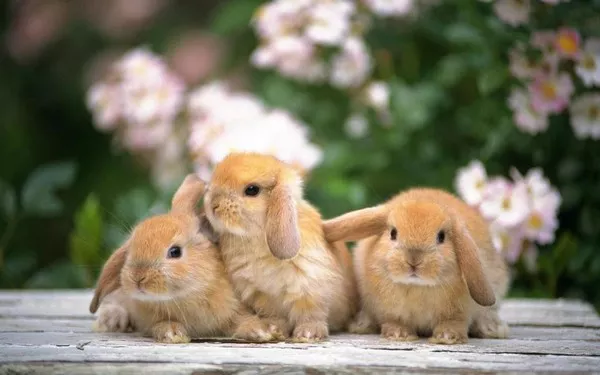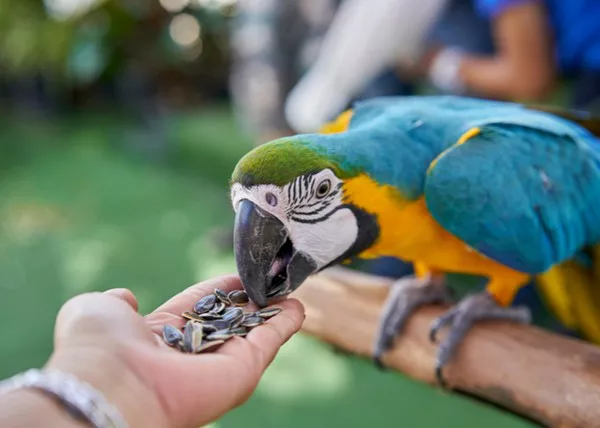Rabbits are often misunderstood creatures, celebrated for their adorable appearance yet underestimated in terms of their dietary needs. As a pet owner, you may wonder, “Are rabbit pellets good for rabbits?” The answer isn’t as straightforward as it might seem. This article explores the role of rabbit pellets in their diet, the nutritional needs of rabbits, and how to provide a balanced and healthy lifestyle for your furry friend.
Understanding Rabbit Diets
The Natural Diet of Rabbits
Rabbits are herbivores, and their natural diet consists primarily of grasses, herbs, and leafy plants. Wild rabbits spend a significant part of their day foraging for food, munching on a variety of fibrous plants. This high-fiber diet helps them maintain a healthy digestive system and keeps their teeth worn down, preventing dental issues.
The Role of Fiber
Fiber is crucial in a rabbit’s diet. It aids in digestion and prevents gastrointestinal (GI) stasis, a condition that can be life-threatening if not addressed promptly. High-fiber foods, such as hay, should make up the bulk of a rabbit’s diet. For domesticated rabbits, the ideal diet consists of at least 80% hay, supplemented by fresh vegetables and a limited amount of pellets.
The Evolution of Rabbit Pellets
Rabbit pellets were developed to provide a concentrated source of nutrition for rabbits, especially for those kept in captivity. They are typically made from ground hay, grains, and other ingredients. While they can be convenient and nutritionally rich, they should not replace the natural fiber-rich diet that rabbits require.
Nutritional Composition of Rabbit Pellets
Ingredients in Rabbit Pellets
Rabbit pellets vary in composition, but they usually contain:
Hay: Alfalfa or timothy hay is often included as a primary ingredient. The hay type affects the pellet’s fiber content.
Grains: Some pellets contain grains like oats or corn, which can increase calorie content.
Vitamins and Minerals: Most commercial pellets are fortified with essential vitamins and minerals to support rabbit health.
Other Additives: Some brands may include preservatives or flavoring agents to enhance palatability.
Nutritional Content
The nutritional values of rabbit pellets typically include:
Protein: Generally between 14-20%. High-protein pellets may be suitable for young rabbits or pregnant/nursing females, but adult rabbits require less protein (around 12-14%).
Fiber: A minimum of 18% is ideal, but higher fiber levels (up to 25%) are preferable.
Fat: Low-fat content (around 2-5%) is essential to prevent obesity.
Vitamins and Minerals: Key nutrients include calcium, phosphorus, and vitamins A, D, and E.
Pros and Cons of Rabbit Pellets
Pros
Convenience: Pellets are easy to measure and store, making them a convenient option for busy pet owners.
Balanced Nutrition: Quality pellets can provide a complete and balanced diet, especially when made from high-fiber hay.
Controlled Portions: Pellets allow for portion control, preventing overeating and obesity.
Cons
Low Fiber Content: Many pellets do not contain enough fiber compared to fresh hay, which is essential for rabbit health.
Potential for Overfeeding: Rabbits can easily overeat pellets, leading to obesity and related health problems.
Limited Variety: Pellets offer little variety in texture and flavor compared to fresh vegetables and hay.
Dental Health Concerns: Chewing pellets does not wear down a rabbit’s teeth as effectively as chewing fibrous hay.
Are Rabbit Pellets Necessary?
The Case for Pellets
While rabbit pellets can be a valuable part of a rabbit’s diet, they are not strictly necessary. Many rabbit owners successfully feed their pets a diet primarily composed of hay and fresh vegetables. However, pellets can serve as a convenient source of concentrated nutrition, especially for young rabbits or those with specific health needs.
Alternative Diets
Hay-Based Diets: High-quality hay should be the primary food source for all rabbits. Timothy hay, meadow hay, and orchard grass are excellent choices.
Fresh Vegetables: Leafy greens (like romaine lettuce, kale, and cilantro) can supplement the diet, providing essential vitamins and hydration.
Limited Fruits: Fruits can be offered as occasional treats. Favorites include apple slices, berries, and bananas.
Herbs: Safe herbs, such as basil, parsley, and dill, can add variety and flavor.
Transitioning Away from Pellets
If you decide to reduce or eliminate pellets from your rabbit’s diet, do so gradually. Sudden changes can cause digestive upset. Begin by mixing a small amount of pellets with hay and fresh veggies, gradually decreasing the pellets over time. Monitor your rabbit for any signs of digestive distress.
Choosing the Right Rabbit Pellets
Key Factors to Consider
Quality Ingredients: Look for pellets made primarily from high-quality grass hay. Avoid those that contain excessive grains or fillers.
High Fiber Content: Select pellets with at least 18% fiber to ensure adequate digestive health.
Avoid Alfalfa for Adults: Alfalfa-based pellets are higher in protein and calcium, making them unsuitable for adult rabbits. Choose timothy or other grass hays.
Brand Reputation: Choose reputable brands that specialize in rabbit nutrition.
Reading Labels
When selecting pellets, carefully read the ingredient list and nutritional information. A high-quality pellet will list grass hay as the first ingredient, with minimal additives. Avoid pellets with artificial colors or preservatives.
See Also: How to Train a Rabbit to High Five?
Feeding Guidelines for Rabbit Pellets
How Much to Feed
Feeding guidelines for rabbit pellets can vary based on age, weight, and activity level. Here are some general recommendations:
Adult Rabbits: Limit pellets to about ¼ cup per 5 pounds of body weight daily. Monitor your rabbit’s weight and adjust portions accordingly.
Young or Growing Rabbits: Provide a higher amount (about ½ cup per 5 pounds) since they require more energy and nutrients for growth.
Pregnant or Nursing Rabbits: Increase the amount to support their nutritional needs during this critical time.
Combining Pellets with Other Foods
When feeding pellets, ensure they are combined with plenty of hay and fresh vegetables. The ideal ratio for a healthy diet is 80% hay, 15% fresh veggies, and 5% pellets. Always provide fresh water, as hydration is vital for digestion.
The Impact of Poor Nutrition
Health Issues Associated with Improper Diets
Feeding an improper diet can lead to several health issues, including:
Obesity: Over-reliance on pellets can contribute to excessive weight gain, leading to obesity.
Gastrointestinal Stasis: A low-fiber diet increases the risk of GI stasis, a severe condition requiring immediate veterinary attention.
Dental Problems: Insufficient chewing due to a lack of hay can cause dental overgrowth and related issues.
Urinary Tract Issues: An imbalance in calcium intake can lead to urinary crystals or stones.
Recognizing Signs of Poor Nutrition
Pet owners should be aware of the following signs that may indicate dietary issues:
Changes in Appetite: A sudden decrease in food intake can indicate digestive problems.
Weight Loss or Gain: Monitor your rabbit’s weight regularly and adjust the diet as needed.
Dental Issues: Signs include drooling, difficulty eating, and overgrown teeth.
Lethargy or Unusual Behavior: Changes in energy levels may signal health problems.
Conclusion
In conclusion, rabbit pellets can be a useful part of a rabbit’s diet when chosen wisely and fed in moderation. However, they should not replace the essential high-fiber components of hay and fresh vegetables. The best approach to a rabbit’s diet is one that mimics their natural feeding habits, emphasizing variety and fiber.
With the right diet and care, your rabbit can live a long, healthy, and happy life, full of hops, binkies, and perhaps a few cheeky nibbles of their favorite treat!
Related Topics:

























